Category Archives: Translation technology
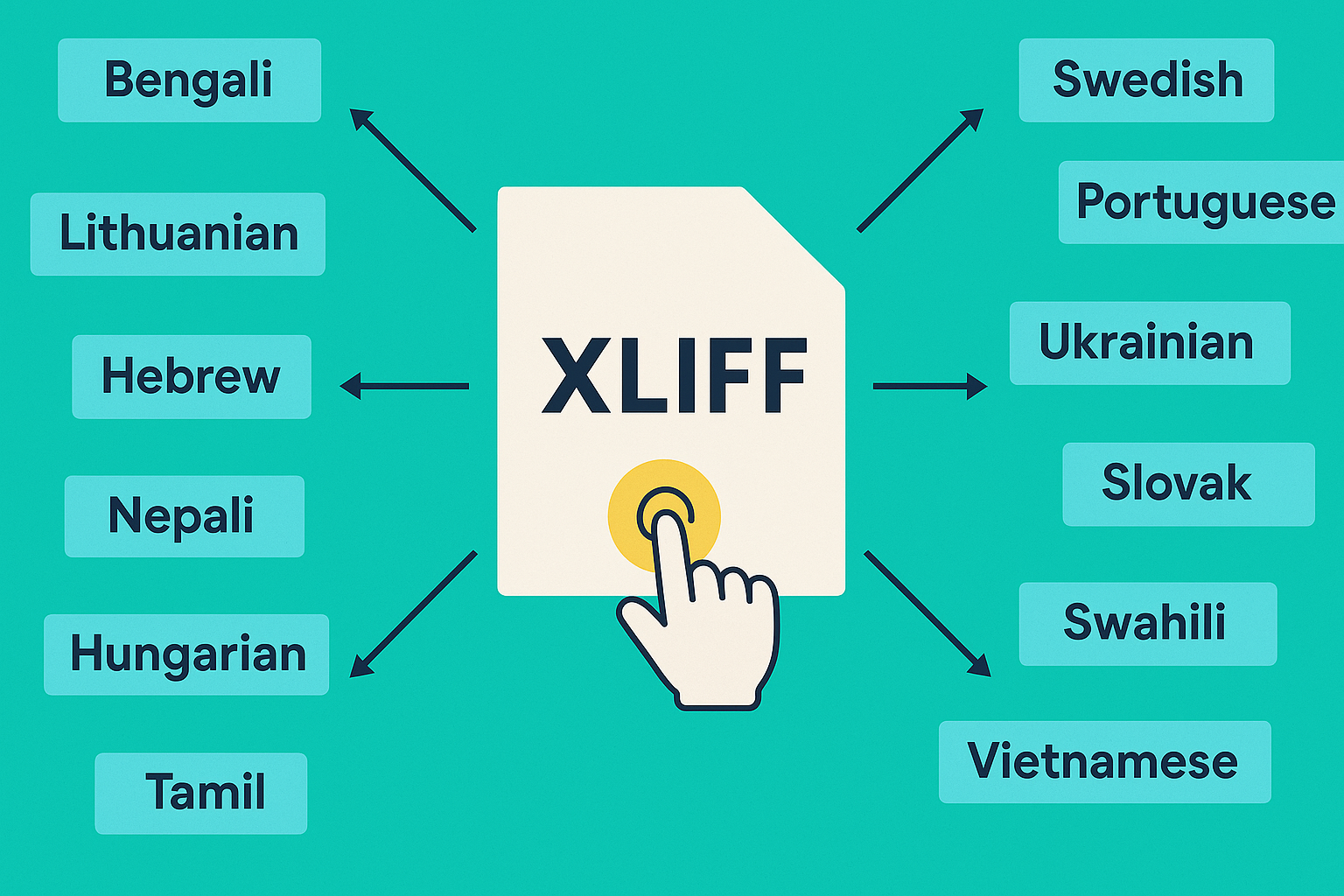
Ensuring Translation Quality Through Better XLIFF Preparation
When managing localization workflows, the format and structure of files sent for translation can make or break the efficiency and quality of the final product. For content packaged in XLIFF (XML Localization Interchange File Format)—a widely used standard for exchanging translatable content between tools—ensuring proper file preparation is essential. What is XLIFF? XLIFF is an …
“Ensuring Translation Quality Through Better XLIFF Preparation”
Read More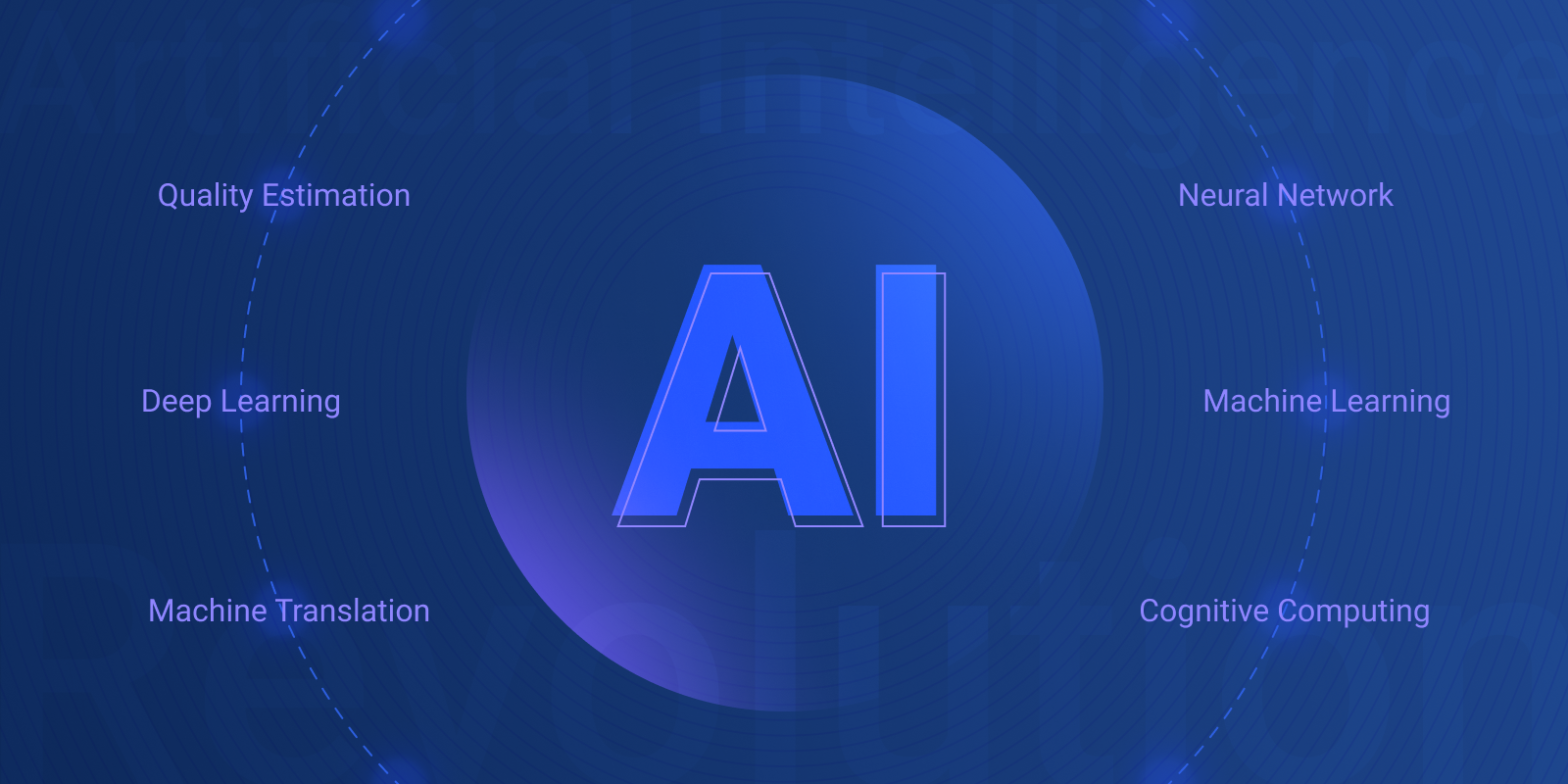
Quality Estimation (AIQE), A New Paradigm
Artificial Intelligence (AI) has been used in translation workflows for quite a while as a way of enhancing productivity by reducing translation effort. In combination with the previous productivity enhancing solution: translation memories (TM), the results are very powerful as they can reduce delivery time and costs significantly. In the 1990s, the introduction of translation memories …
“Quality Estimation (AIQE), A New Paradigm”
Read More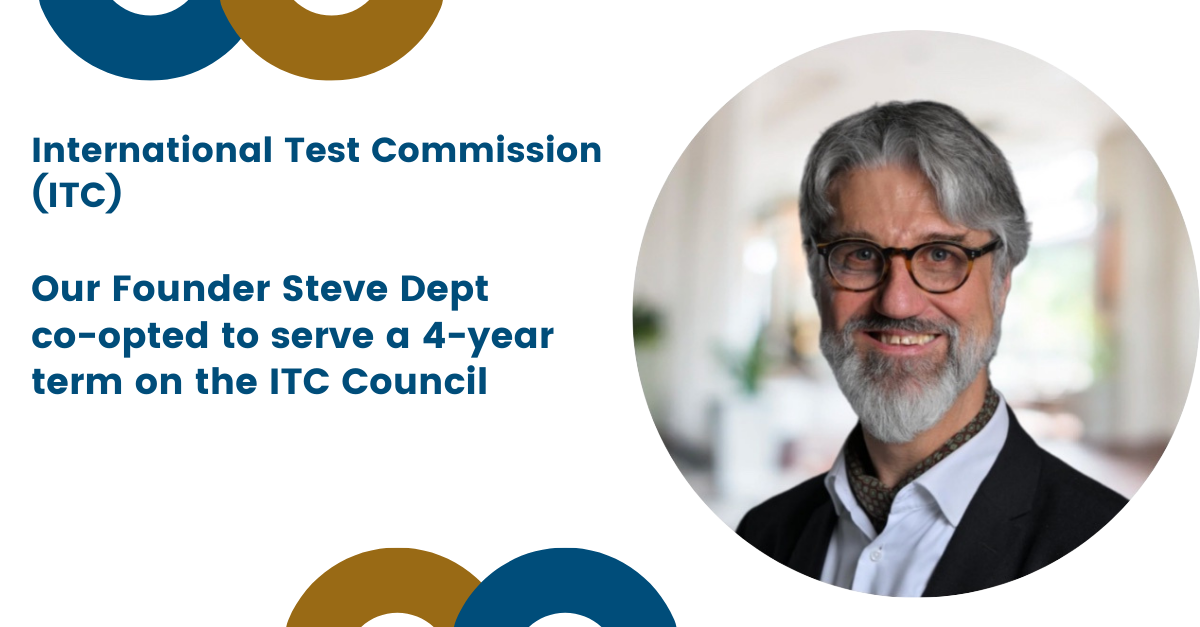
Steve Dept, Founding Partner of cApStAn LQC, co-opted to serve a 4-year term on the ITC Council
At the International Test Commission’s (ITC) biennial conference, in Granada, ITC President-Elect Kadriye Ercikan (She/her/hers) will pick up the baton from President Stephen G. Sireci. cApStAn’s Founder Steve Dept (he/him/his) was just co-opted to serve a four-year term on the ITC Council. Steve looks forward to working with his peers, researchers and practitioners alike, to disseminate …
“Steve Dept, Founding Partner of cApStAn LQC, co-opted to serve a 4-year term on the ITC Council”
Read More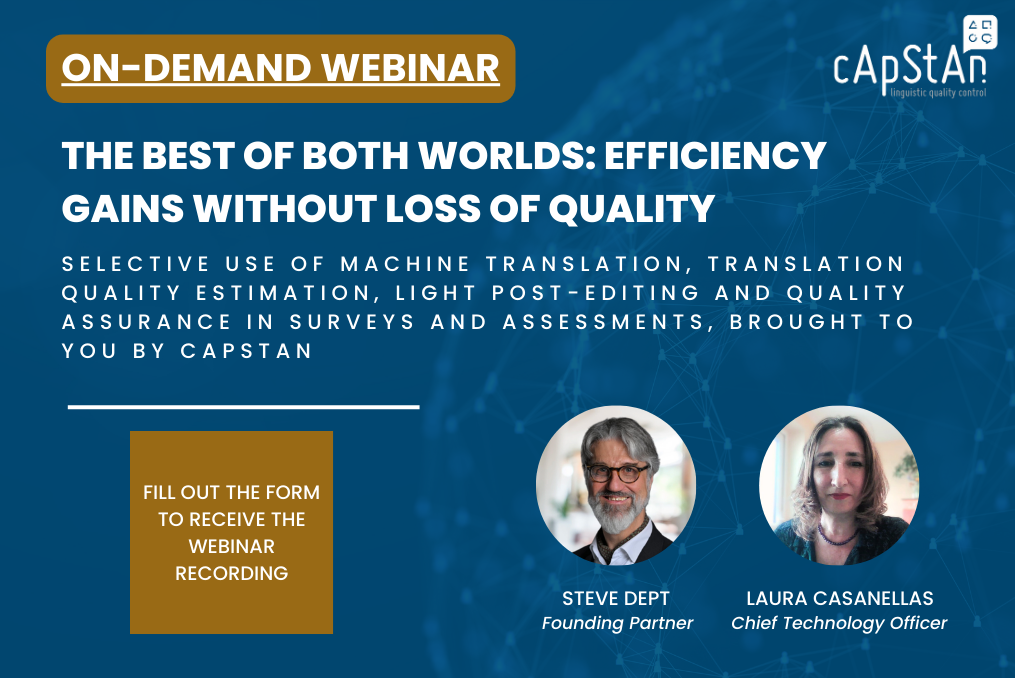
On-Demand Webinar | The Best of Both Worlds: Efficiency Gains without Loss of Quality
Selective use of machine translation, translation quality estimation, light post-editing and quality assurance in surveys and assessments, brought to you by cApStAn From 2000 to 2024, we have come a long way. In 2000, cApStAn had a framework contract with the European Commission for rapid post-editing (RPE) of clunky, rule-based machine translation of internal documents. …
“On-Demand Webinar | The Best of Both Worlds: Efficiency Gains without Loss of Quality”
Read More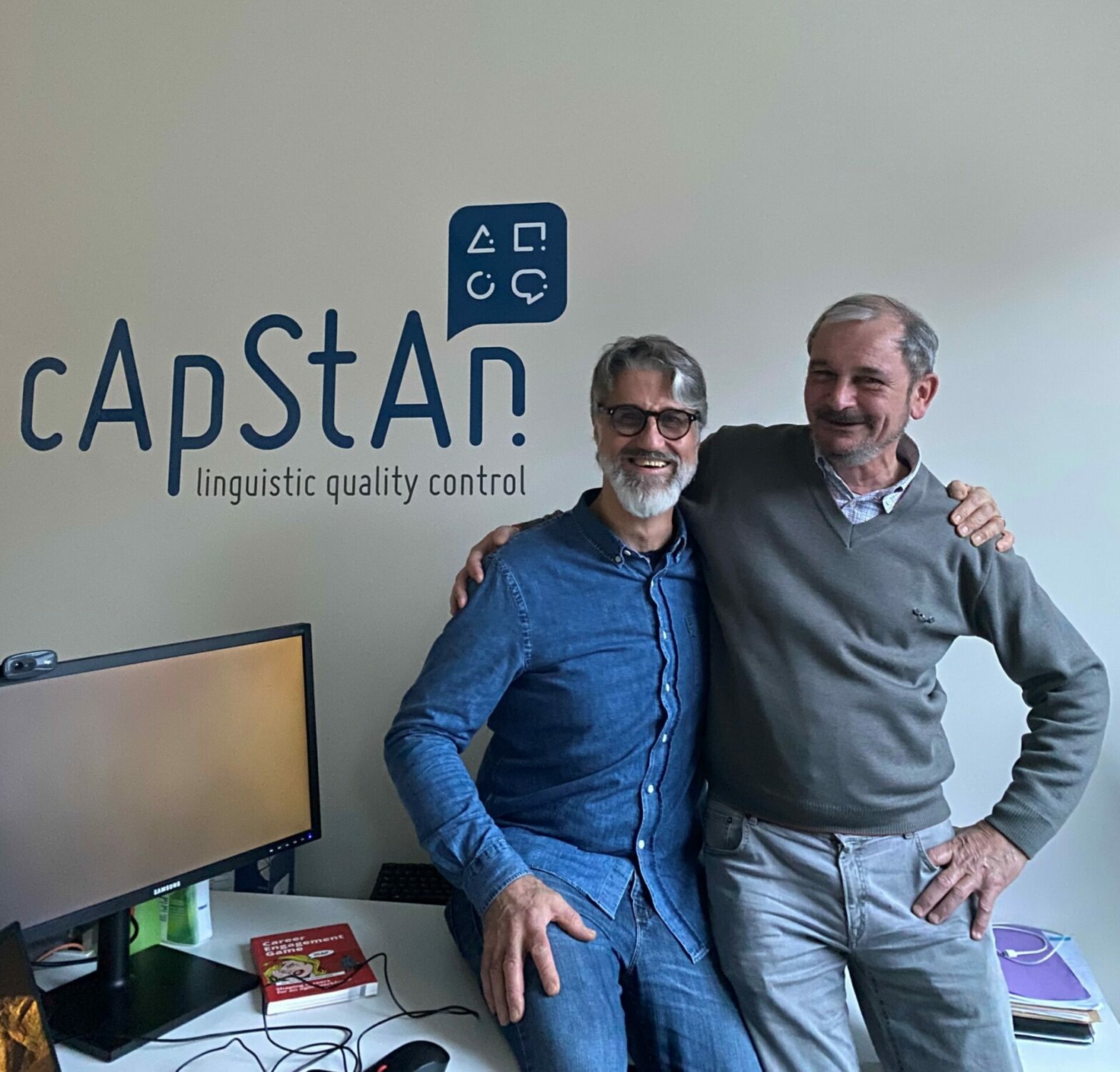
“cApStAn at a scale”, Jan Denys, CEO, and Steve Dept, Founding Partner
No comparative surveys without comparable data Twenty-four years ago, cApStAn started developing, testing, fine-tuning and implementing methods to ensure comparability between different language versions of tests and questionnaires. That was our core activity and it still is. Tests and questionnaires are measurement instruments. They measure knowledge, skills, attitudes, trends, or opinions. They link data points …
““cApStAn at a scale”, Jan Denys, CEO, and Steve Dept, Founding Partner”
Read More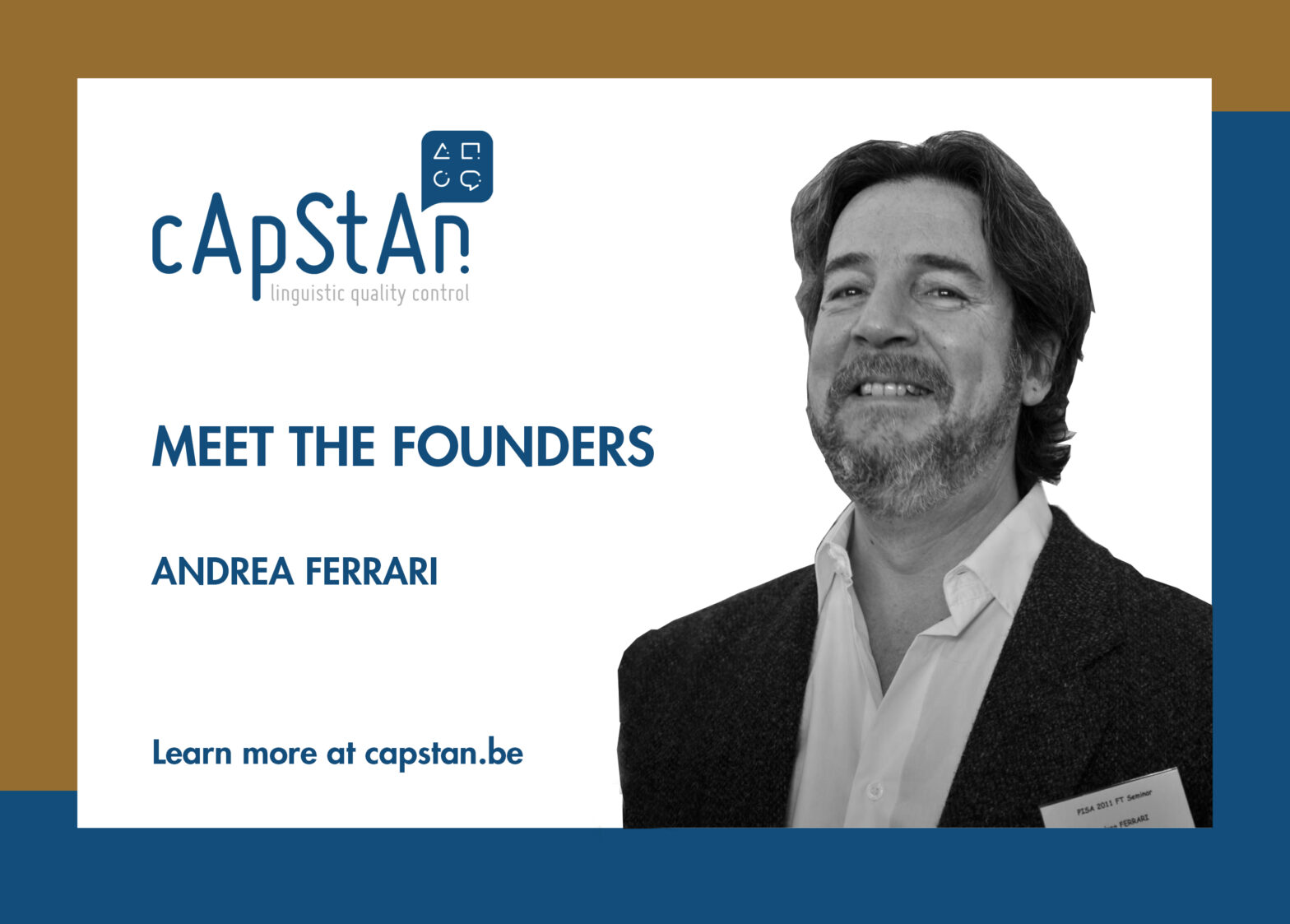
“Navigating the Seas of Linguistic Quality: A Chronicle of cApStAn’s 22-Year Odyssey”
I am Andrea Ferrari, an Italian national, born in Peru. I was exposed to a multicultural environment from early on, living and studying in Canada, Italy, Australia, Greece, and Belgium. I earned a degree in Business Engineering from the Solvay Business School, Brussels, did a stint with a major multinational (Procter & Gamble) but switched …
““Navigating the Seas of Linguistic Quality: A Chronicle of cApStAn’s 22-Year Odyssey” “
Read More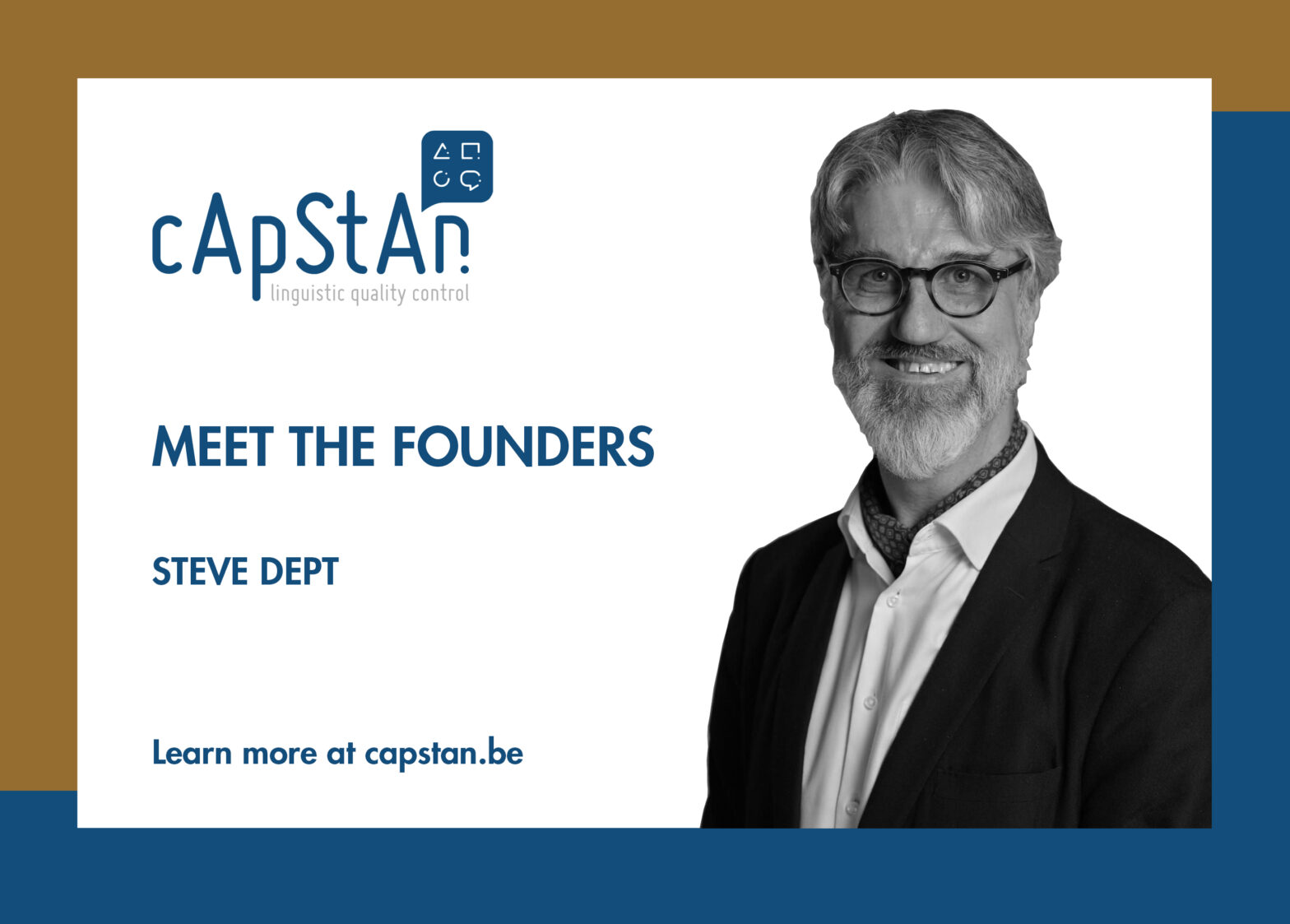
“What it takes to build a boutique language solutions provider: a cApStAn founder nails it”
Founders of boutique language solution providers are often overrated and cApStAn is a case in point in this regard. I am Steve Dept, a linguist by training—though not a translator—and a polyglot, initially because my parents travelled a lot: before the end of secondary school, I had attended 14 schools in 4 different languages. While attending German …
““What it takes to build a boutique language solutions provider: a cApStAn founder nails it””
Read More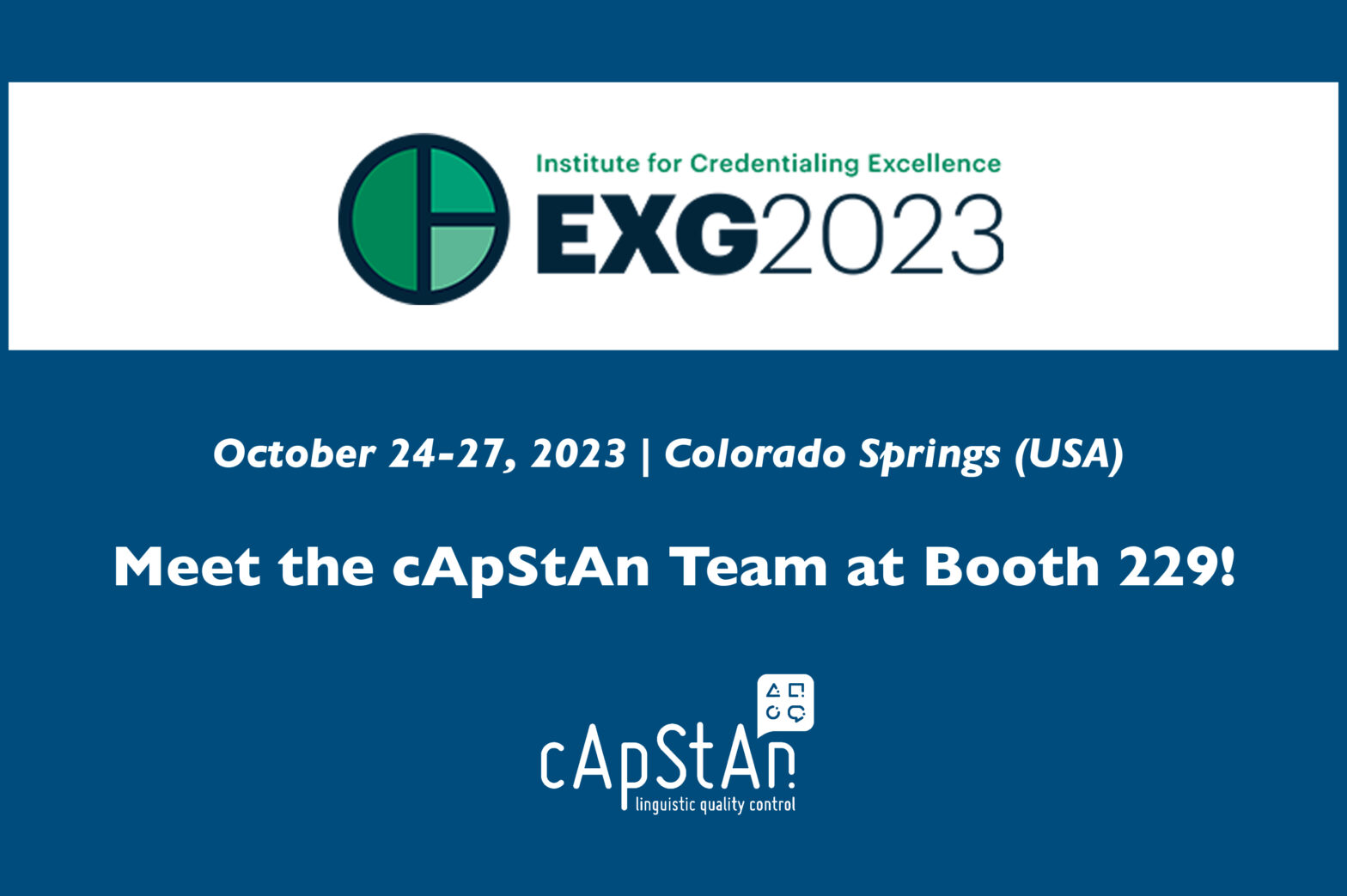
I.C.E. Exchange coming up soon! Visit us at booth #229
If you are attending the I.C.E. Exchange 2023 in Colorado Springs, USA, we shall be delighted to welcome you at our booth (# 229) for a chat with cApStAn Founding Partner and Head of Strategic Partnerships Steve Dept, Business Development and Marketing Lead Devasmita Ghosh, and Project Manager Nela Manojlovic. For over two decades, cApStAn has been involved in translation …
“I.C.E. Exchange coming up soon! Visit us at booth #229”
Read More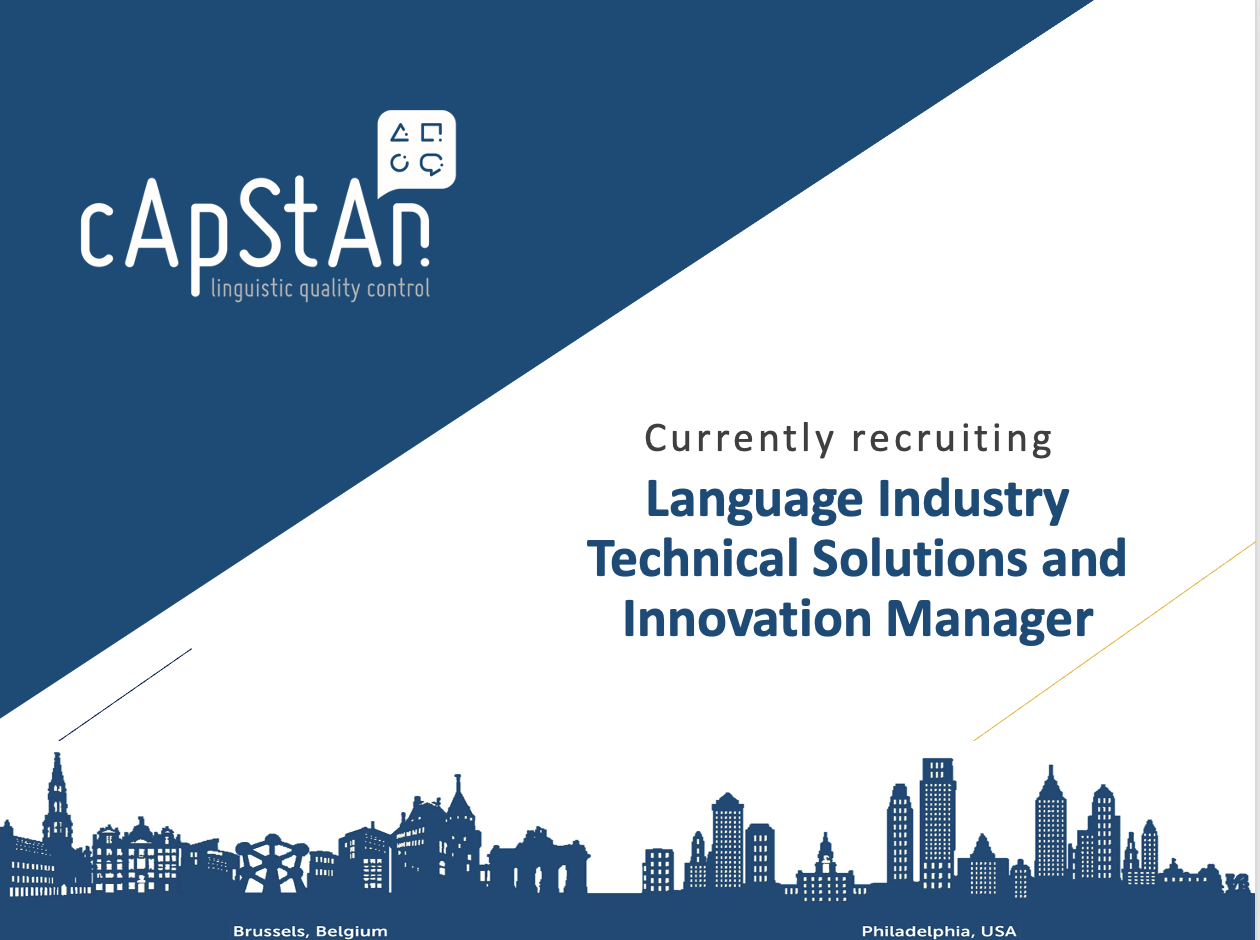
Currently recruiting: Language Industry Technical Solutions and Innovation Manager
Technical solutions and innovations manager cApStAn is a high-profile language service provider with a holistic approach to multilingual projects: this ranges from translatability assessments to preparation of glossaries and translation guidelines, to delivering translations that are fit for purpose. We specialize in translation and adaptation of data collection instruments (assessments, questionnaires, simulation exercises, psychological tests). …
“Currently recruiting: Language Industry Technical Solutions and Innovation Manager”
Read More
Multilingual Skills Assessment Translation series, part 4: Maximising fairness, reliability, and validity in multilingual tests after translation
This is the 4th issue in our “Multilingual Skills Assessment Translation series”. The primary objective of this series is to provide a comprehensive illustration of the complexities inherent in test translation. By doing so, we aim to underscore the immense value derived from establishing a robust linguistic quality assurance design. This episode takes a closer …
Read More
Introducing the Translation and Adaptation Chapter of the ITC/ATP Guidelines for Technology-Based Assessment
This article by Steve Dept, Founding Partner of cApStAn, was originally published on the ATP Global website and is part of a series supporting the ITC/ATP Guidelines for Technology-based Assessment. The article can be downloaded at this link The myth that a well-crafted test with robust psychometric properties is, in theory, always portable across languages …
Read More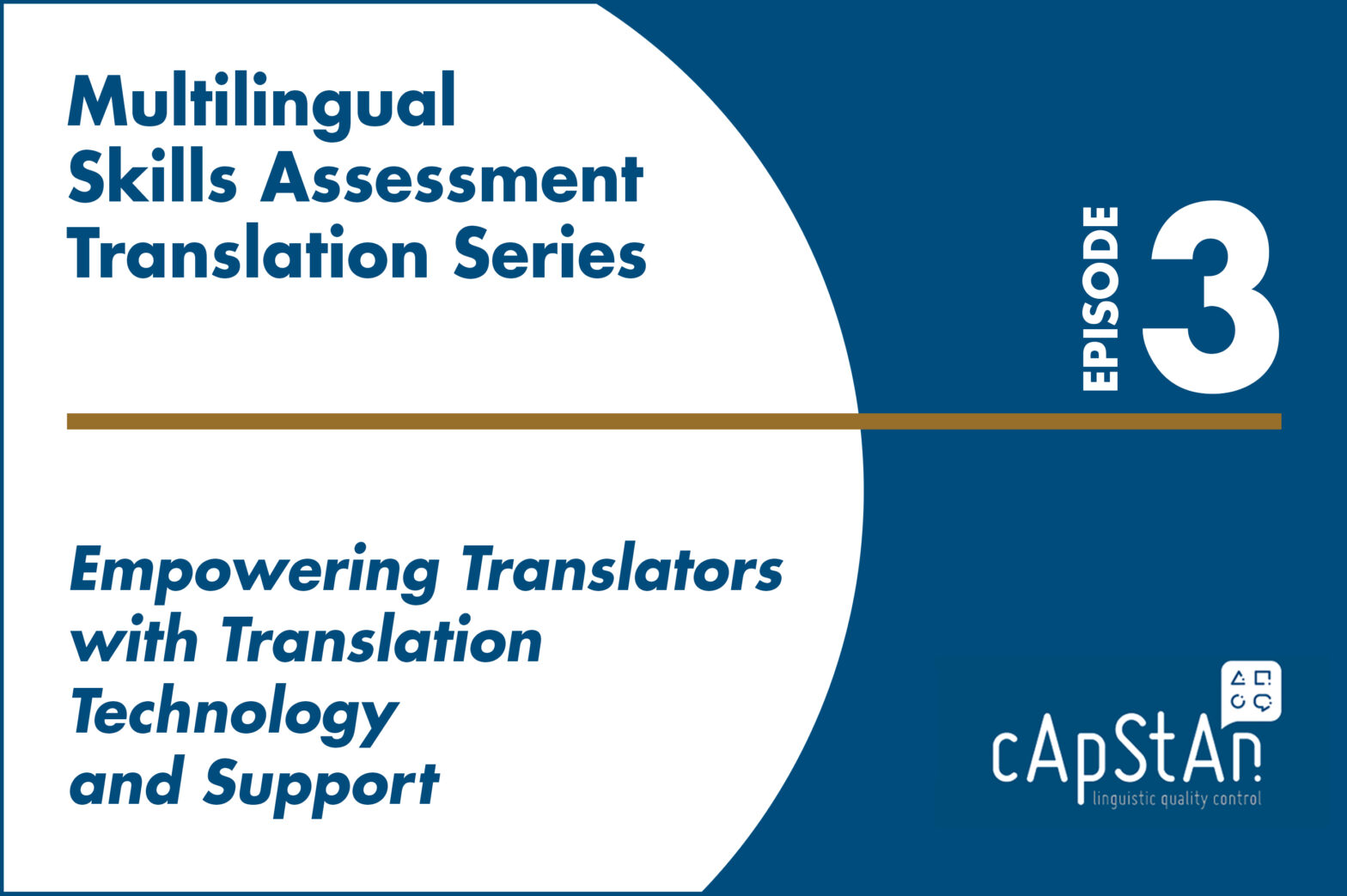
Multilingual Skills Assessment Translation Series, Episode 3: Empowering Translators with Translation Technology and Support
Welcome to the third episode of our “Multilingual Skills Assessment Translation Series”. The primary objective of this series is to provide a comprehensive illustration of the complexities inherent in test translation. By doing so, we aim to underscore the immense value derived from establishing a robust linguistic quality assurance design. In this episode our translation …
Read More